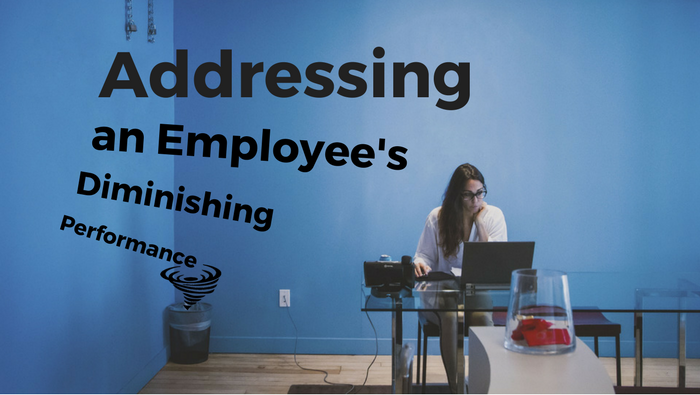
4 Tips for Leading While Absent
![]()
My leadership blog is all about helping current and emerging leaders learn how to transform difficult conversations and dysfunctional workplace relationships into positive and productive ones.

4 Tips for Leading While Absent
/
It hasn’t been the best of times around the Barker household this week:
/
/
On Sunday, my 11-year old son came down with a fever, a fairly severe headache and a stiff neck./
/
I’ve been home with him, as he’s been off school all week, and Advil and Tylenol have had a tough time keeping his symptoms fully at bay./
/
Our doctor’s advised us to keep an eye out for any additional symptoms that are related to meningitis (as a stiff neck is) and, if his fever and headache aren’t gone by this afternoon, we’re to take him to the ER for further assessment.
/
/
On Tuesday, my 81 year-old father had a seizure and had to be taken by ambulance to the hospital./
/
Thankfully, a battery of tests revealed nothing of further concern./
/
He was drained by the time I got him home that night but by Thursday he was back to his normal self.
/
Needless to say, we remain pretty concerned, not knowing why it happened and hoping it won’t happen again.
/
/
Then, since yesterday, perhaps not surprisingly, I haven’t been feeling all that great.
/
I’ve got an intermittent sore throat, low energy and I’m feeling overtired.
//
“So what does all this have to do with leadership, Brie?”
/
Well, I don’t have a staff to lead and manage … but I’m going to assume that you do.
/
Now, imagine that you’ve had a week like I’ve had.
/
Actually, you probably don’t have to imagine all that much; I’m sure you’ve had similar weeks in your life.
/
Here are some thoughts on how you can demonstrate good leadership when circumstances call for you be away from work in order to care for your family — and for yourself.
/
/
1. Actually STAY away from work and attend to your family.
/
If you try to do both, you’ll have a split focus and probably won’t do a very good job of either one.
/
Staying away sends important messages to your staff, that you:
/
-
trust them as a team and as individuals to step-up and look after things while you’re away, and
-
believe attending to urgent and exceptional family and personal matters is at least equally, if not more important, than work.
/
This is a chance to model the behaviour that you’d want your staff to demonstrate in similar circumstances.
/
/
2. Be candid with your staff.
/
Let your staff know what’s calling you to be away. Again, this is modelling the behaviour you’d want from your staff.
/
Now, we all have different comfort levels in sharing this type of information.
/
If sharing this kind of thing makes you uncomfortable, all the more reason to be open.
/
This is a place where you can stretch and grow as a leader, to put what’s best for your team and organization above your own personal discomfort.
/
If you share these things, it will help staff members who share your preference for privacy feel more comfortable opening up to you.
/
You can also expect to receive some empathy from your staff. The situation provides a conduit for strengthening the human connection. All you need to do is receive and acknowledge it with gratitude.
/
/
3. Provide direction where necessary.
/
Give specific direction to staff on what to do in your absence — but only what’s necessary, i.e. don’t micromanage.
/
For example, you may want to have certain people look after specific things, whether it be a task or just keeping an eye on something.
/
Unless there’s a compelling reason to communicate these things in a private email, lay it out for the whole group.
/
This way everyone’s aware of who’s doing what — efforts will not be duplicated and people will know who to go to for what while you’re away.
/
/
4. Set communication protocols.
/
Set things up so your don’t even see emails or receive phone calls that don’t TRULY require your immediate attention.
/
Have one of your staff members monitor and filter these things.
/
Give them a list of people and/or subject matters that you know will require an immediate response from only you — these are the only items that should be forwarded to you while you’re away.
/
Entrust this person to forward additional items outside of this list that they deem urgent.
/
This, too, reinforces your trust in your staff and will help you keep your focus on what you’re attending to at home.
/
/
I hope this reinforces the notion that you have the opportunity to demonstrate good leadership even when you’re away from the office and attending to the well-being of you and your family.
/
Have a productive and enjoyable day!
/
— Brie
/
/
Blog Post
4 Tips for Leading While Absent
/
It hasn’t been the best of times around the Barker household this week:
/
/
On Sunday, my 11-year old son came down with a fever, a fairly severe headache and a stiff neck./
/
I’ve been home with him, as he’s been off school all week, and Advil and Tylenol have had a tough time keeping his symptoms fully at bay./
/
Our doctor’s advised us to keep an eye out for any additional symptoms that are related to meningitis (as a stiff neck is) and, if his fever and headache aren’t gone by this afternoon, we’re to take him to the ER for further assessment.
/
/
On Tuesday, my 81 year-old father had a seizure and had to be taken by ambulance to the hospital./
/
Thankfully, a battery of tests revealed nothing of further concern./
/
He was drained by the time I got him home that night but by Thursday he was back to his normal self.
/
Needless to say, we remain pretty concerned, not knowing why it happened and hoping it won’t happen again.
/
/
Then, since yesterday, perhaps not surprisingly, I haven’t been feeling all that great.
/
I’ve got an intermittent sore throat, low energy and I’m feeling overtired.
//
“So what does all this have to do with leadership, Brie?”
/
Well, I don’t have a staff to lead and manage … but I’m going to assume that you do.
/
Now, imagine that you’ve had a week like I’ve had.
/
Actually, you probably don’t have to imagine all that much; I’m sure you’ve had similar weeks in your life.
/
Here are some thoughts on how you can demonstrate good leadership when circumstances call for you be away from work in order to care for your family — and for yourself.
/
/
1. Actually STAY away from work and attend to your family.
/
If you try to do both, you’ll have a split focus and probably won’t do a very good job of either one.
/
Staying away sends important messages to your staff, that you:
/
-
trust them as a team and as individuals to step-up and look after things while you’re away, and
-
believe attending to urgent and exceptional family and personal matters is at least equally, if not more important, than work.
/
This is a chance to model the behaviour that you’d want your staff to demonstrate in similar circumstances.
/
/
2. Be candid with your staff.
/
Let your staff know what’s calling you to be away. Again, this is modelling the behaviour you’d want from your staff.
/
Now, we all have different comfort levels in sharing this type of information.
/
If sharing this kind of thing makes you uncomfortable, all the more reason to be open.
/
This is a place where you can stretch and grow as a leader, to put what’s best for your team and organization above your own personal discomfort.
/
If you share these things, it will help staff members who share your preference for privacy feel more comfortable opening up to you.
/
You can also expect to receive some empathy from your staff. The situation provides a conduit for strengthening the human connection. All you need to do is receive and acknowledge it with gratitude.
/
/
3. Provide direction where necessary.
/
Give specific direction to staff on what to do in your absence — but only what’s necessary, i.e. don’t micromanage.
/
For example, you may want to have certain people look after specific things, whether it be a task or just keeping an eye on something.
/
Unless there’s a compelling reason to communicate these things in a private email, lay it out for the whole group.
/
This way everyone’s aware of who’s doing what — efforts will not be duplicated and people will know who to go to for what while you’re away.
/
/
4. Set communication protocols.
/
Set things up so your don’t even see emails or receive phone calls that don’t TRULY require your immediate attention.
/
Have one of your staff members monitor and filter these things.
/
Give them a list of people and/or subject matters that you know will require an immediate response from only you — these are the only items that should be forwarded to you while you’re away.
/
Entrust this person to forward additional items outside of this list that they deem urgent.
/
This, too, reinforces your trust in your staff and will help you keep your focus on what you’re attending to at home.
/
/
I hope this reinforces the notion that you have the opportunity to demonstrate good leadership even when you’re away from the office and attending to the well-being of you and your family.
/
Have a productive and enjoyable day!
/
— Brie
/














